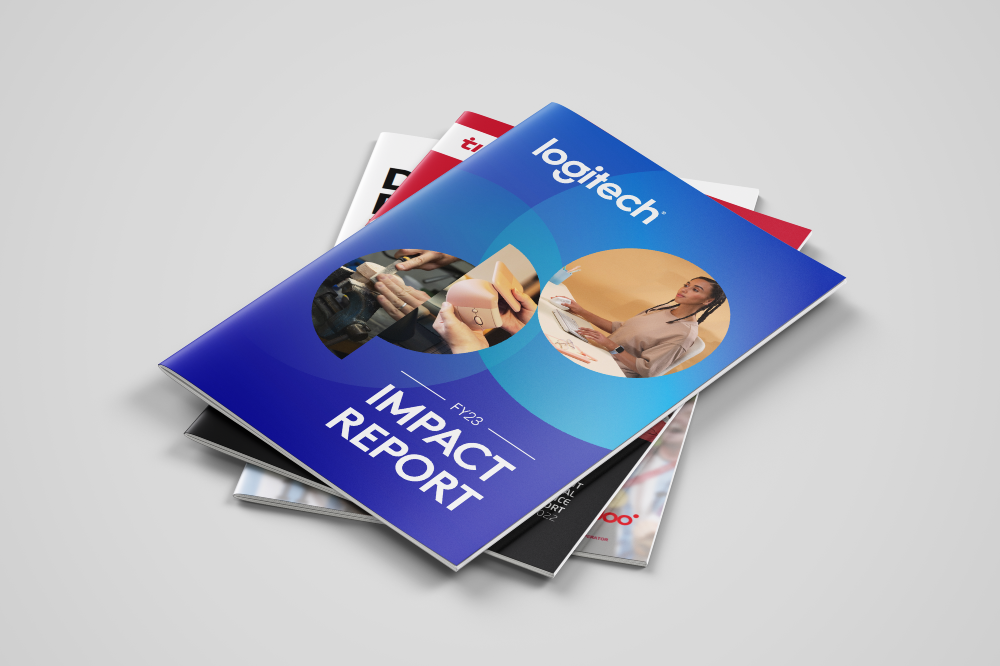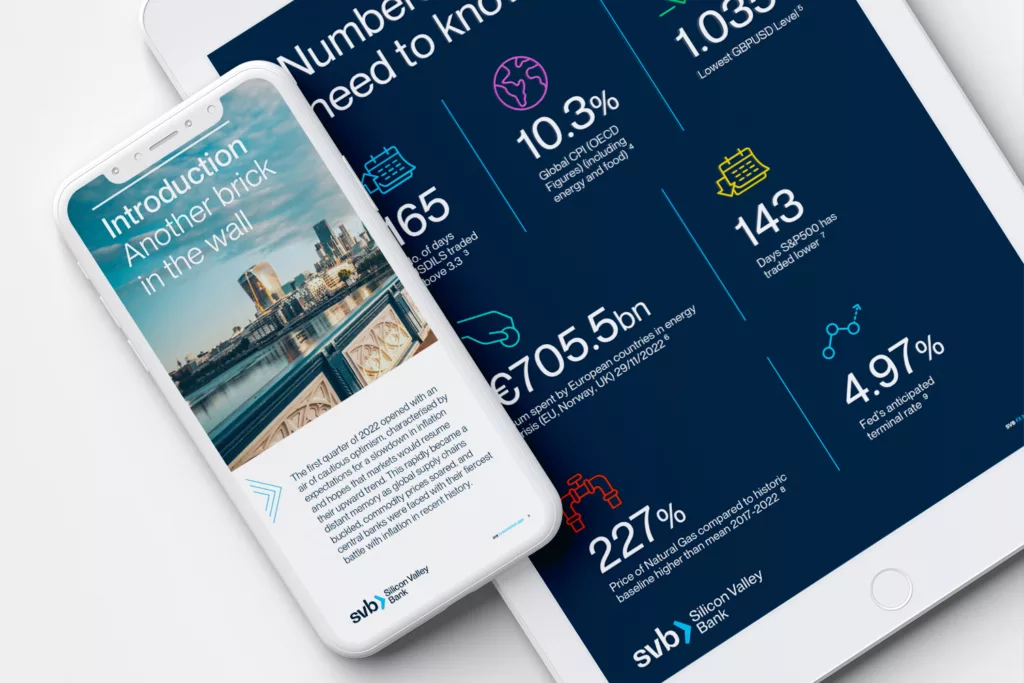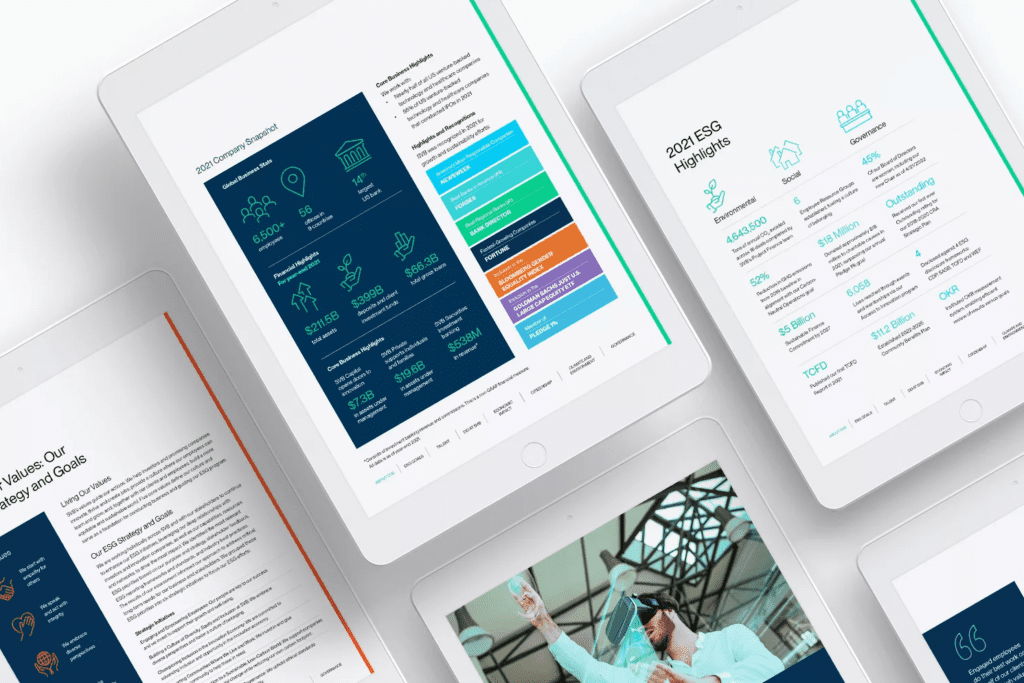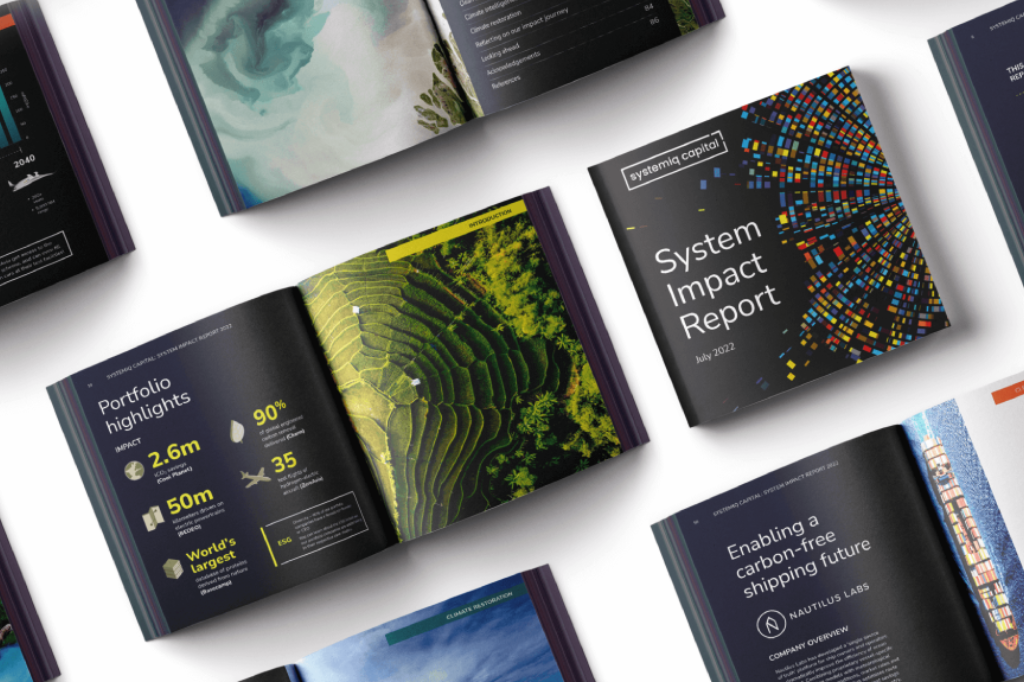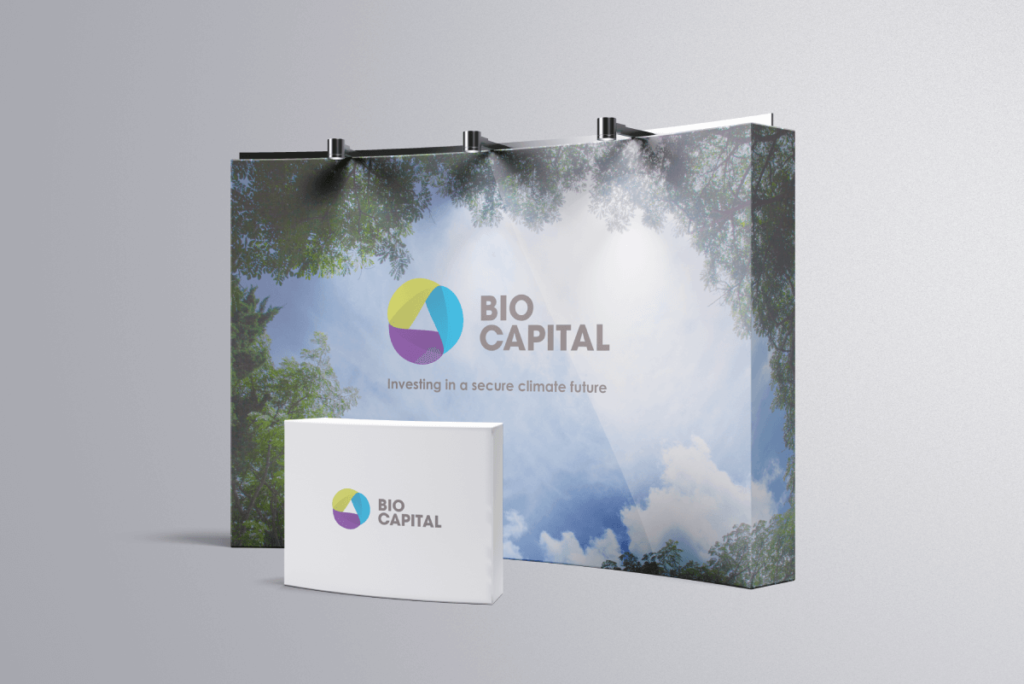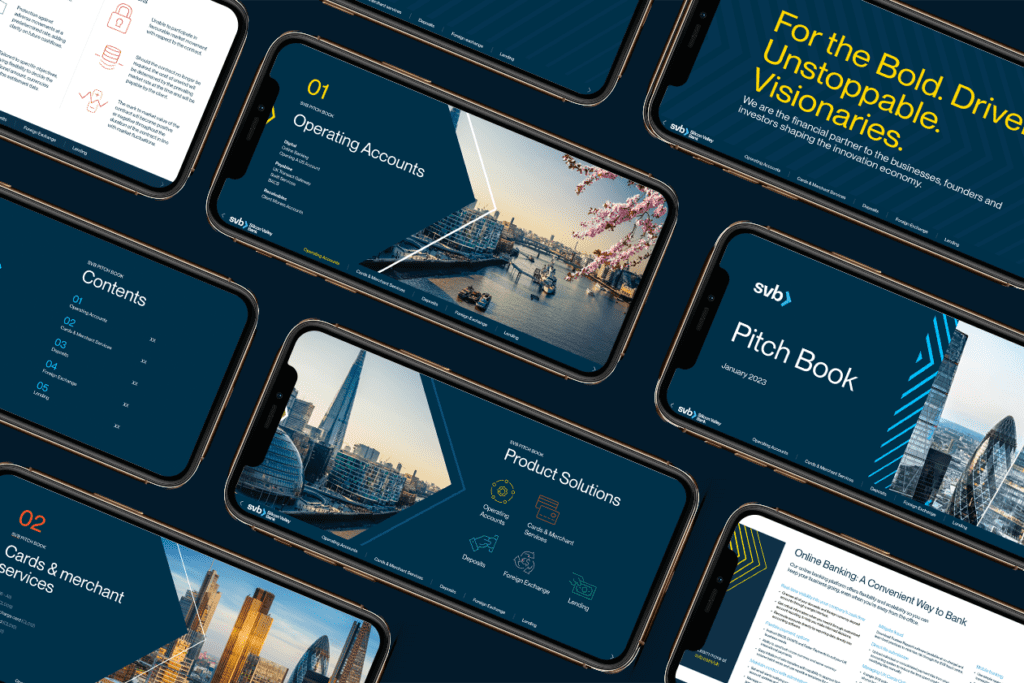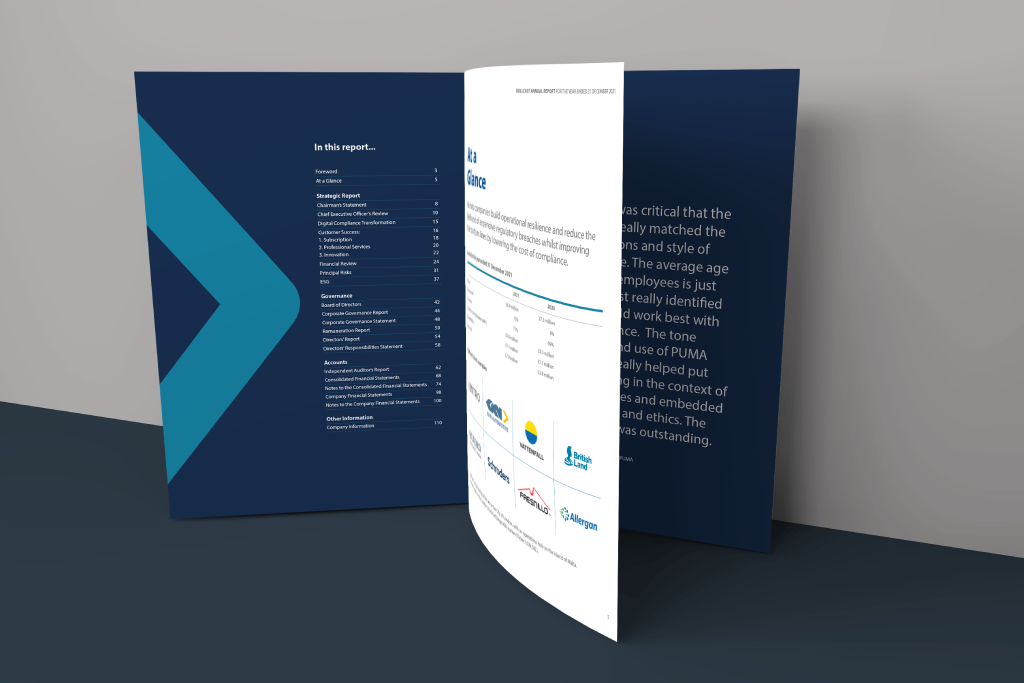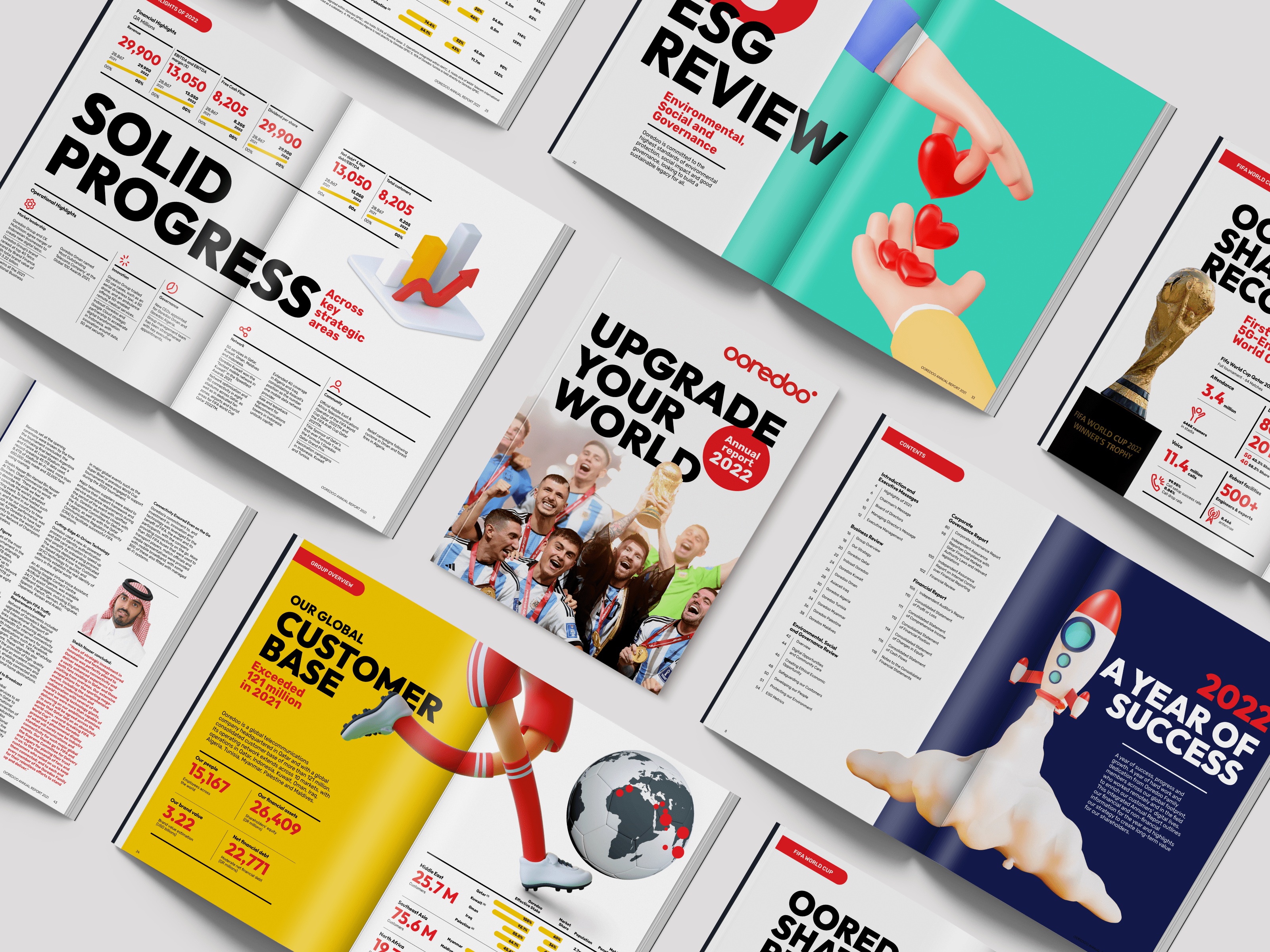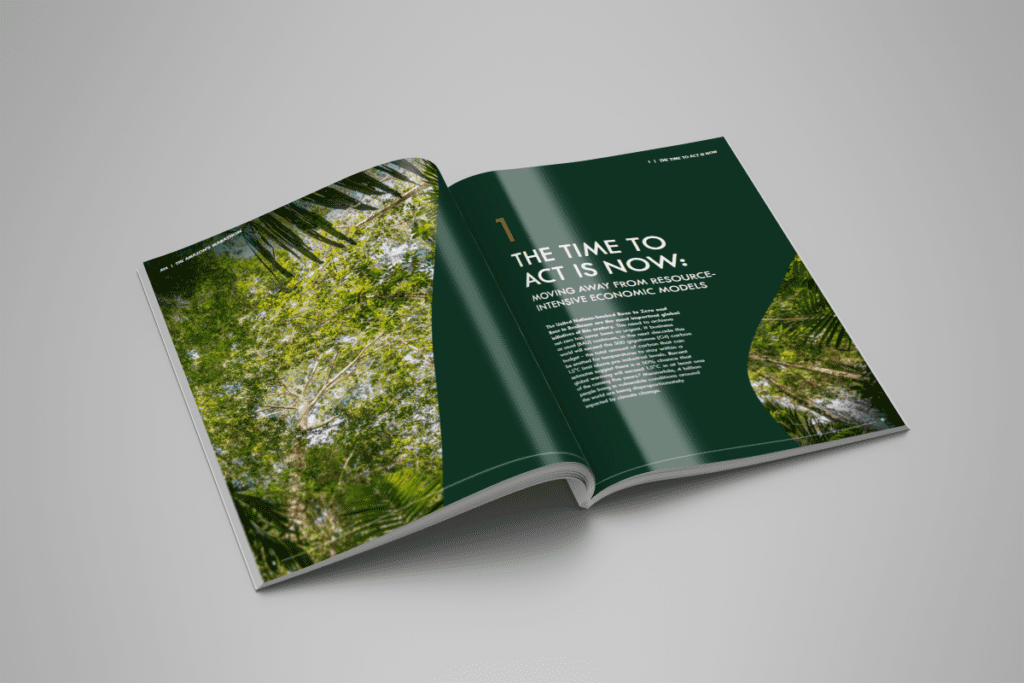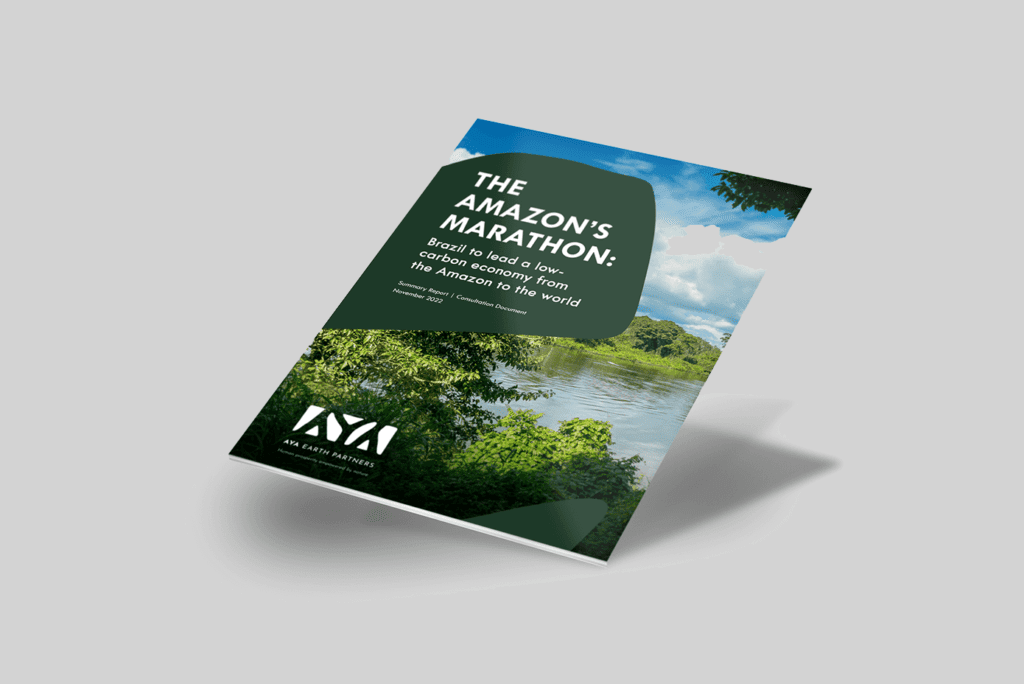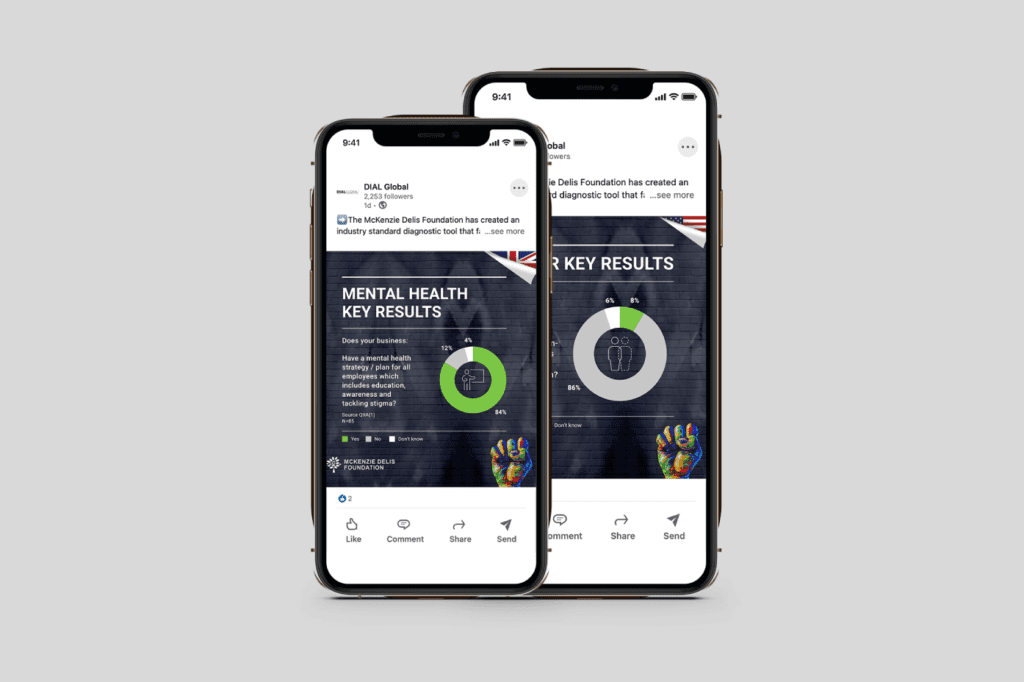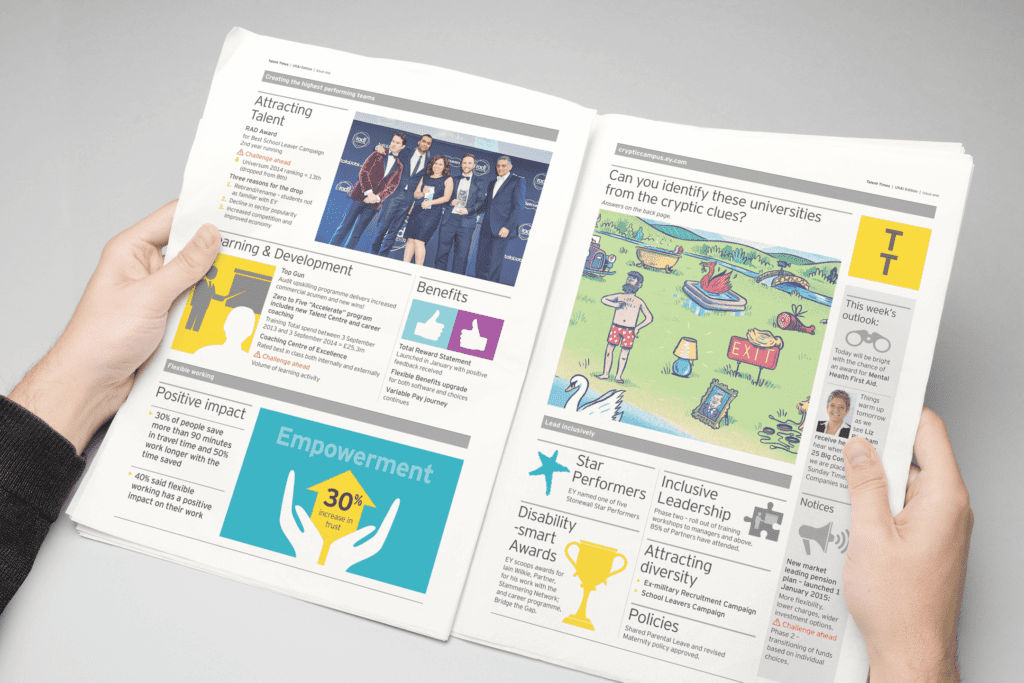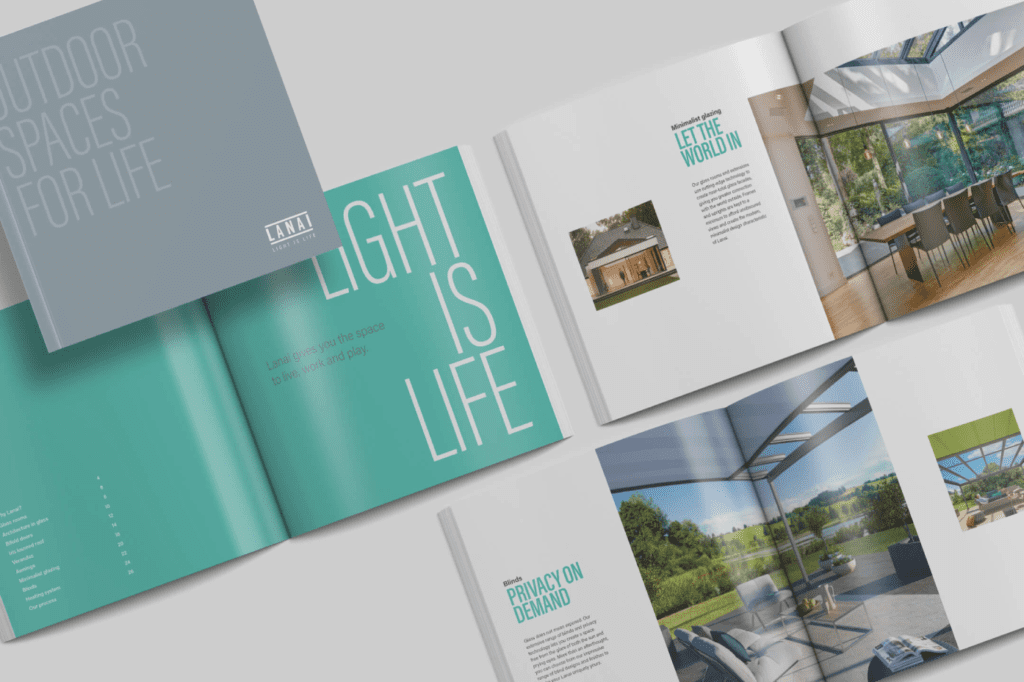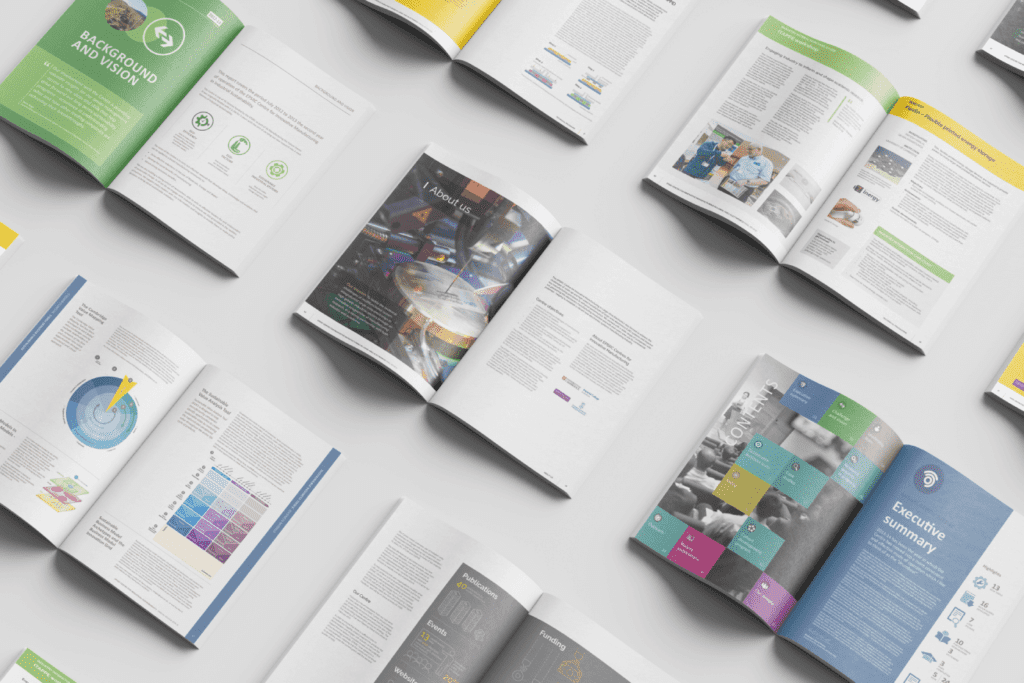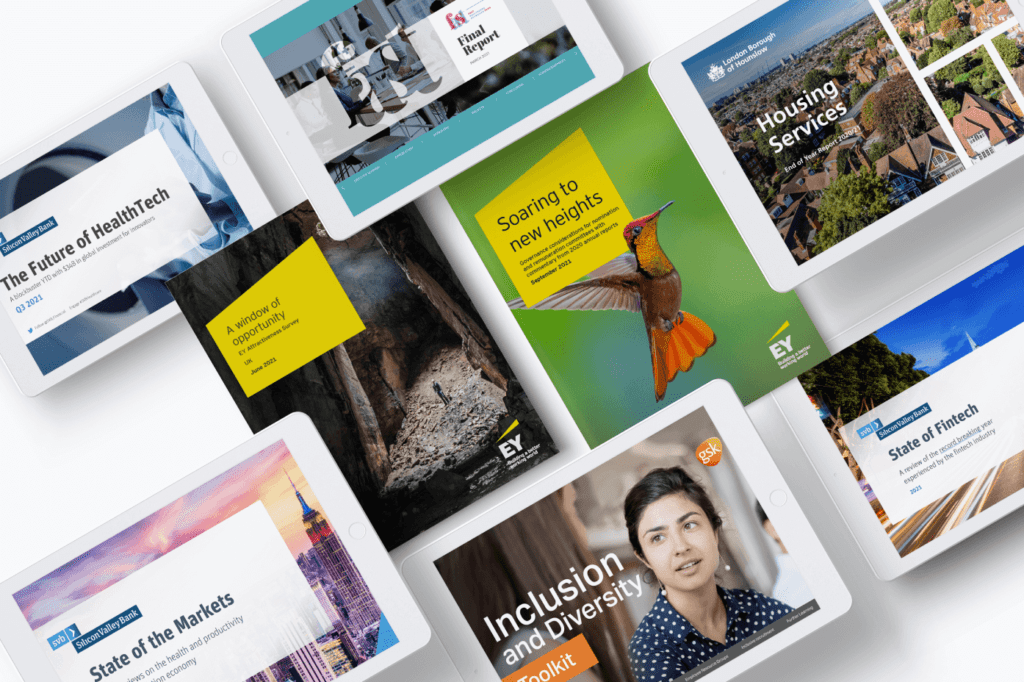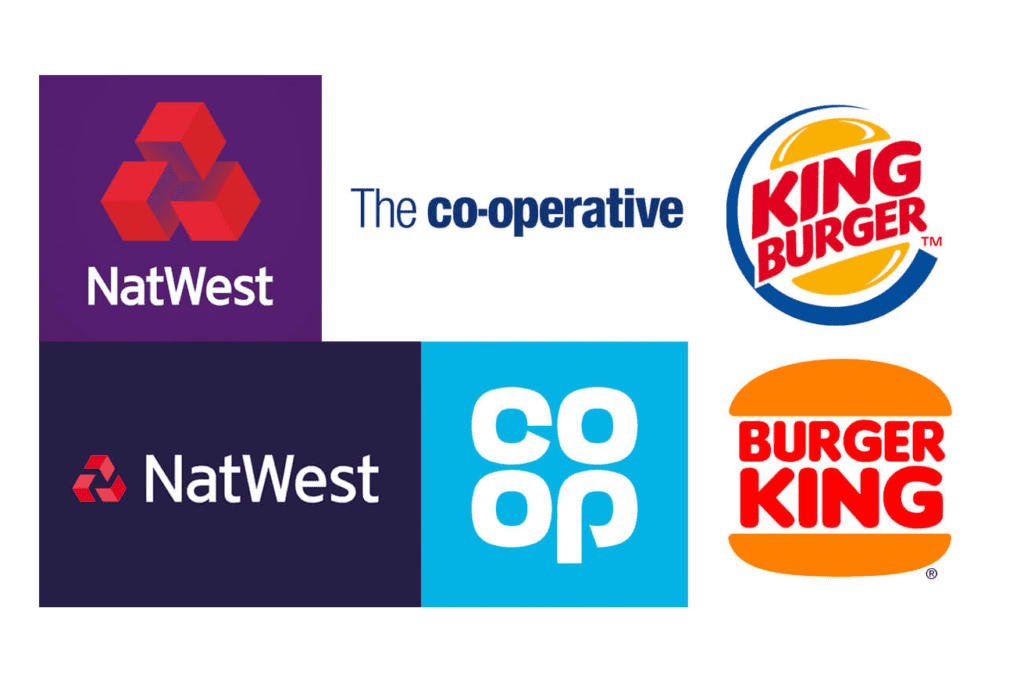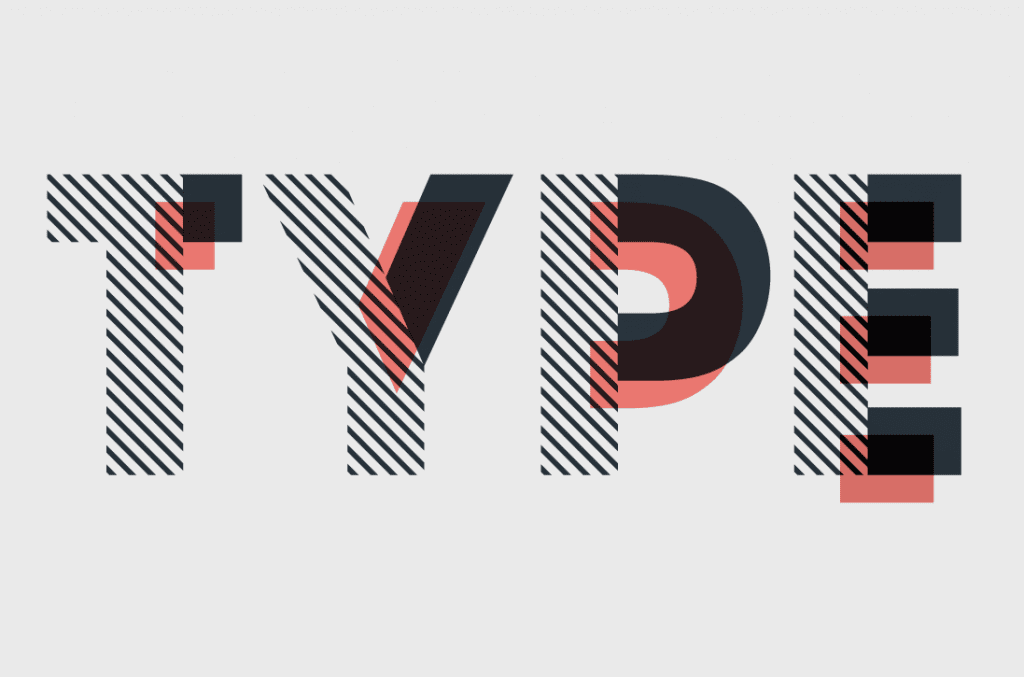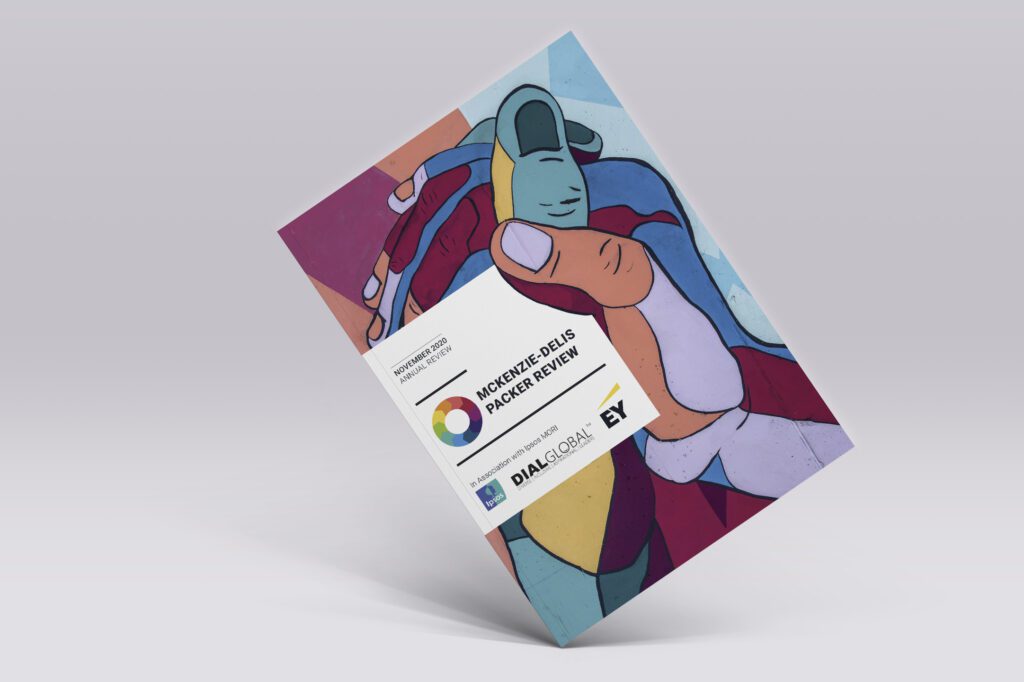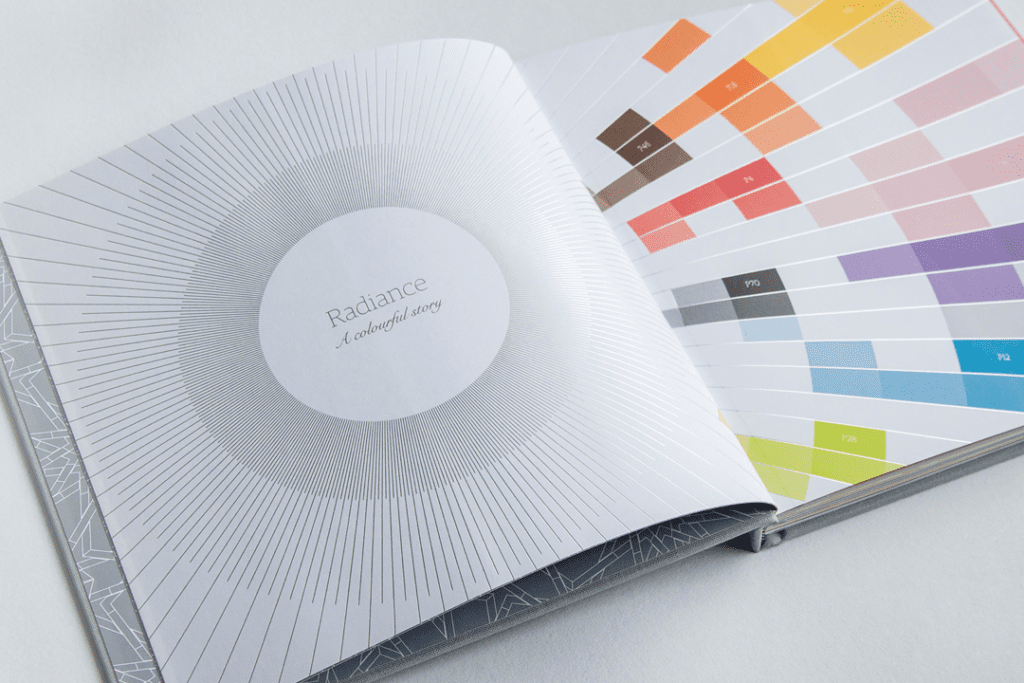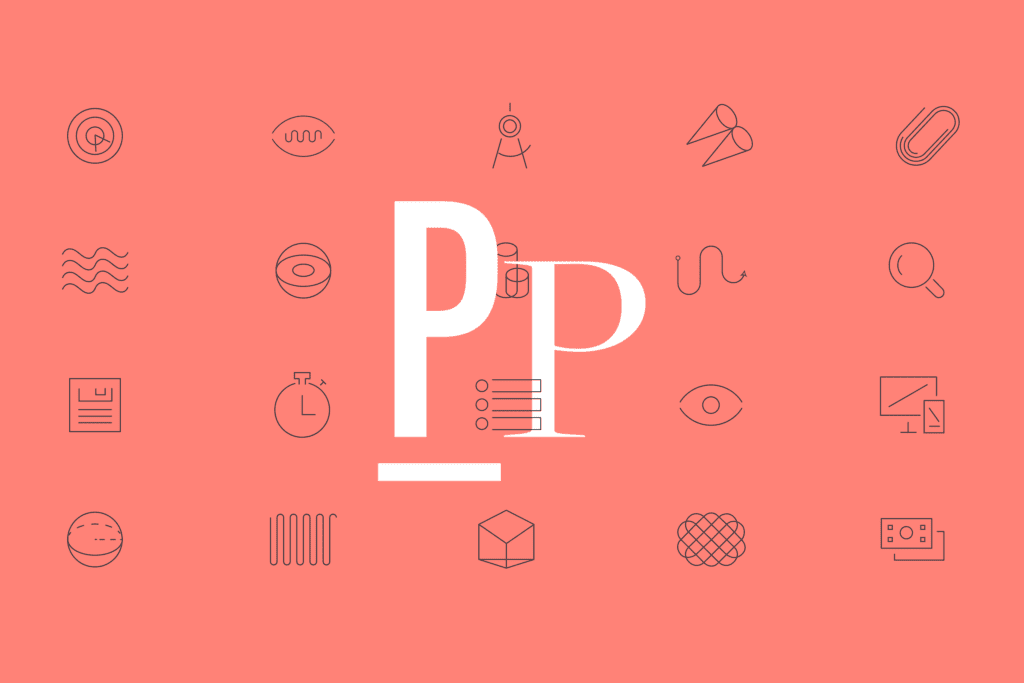An annual report is an investment that costs money and time, so the planning stage needs to be done properly.
But, with a deadline in mind, it’s tempting to rush into writing your annual report. We encourage you to slow down and take time to reflect before you begin. Map out the following elements and you’ll save time and money in the long run.
Three steps to planning an effective annual report design process
When designing an annual report it’s essential to consider your messaging, goals and objectives from the outset. Taking time to map out these elements will save hours in the long run.
Here are our three steps to planning an effective annual report design process…

1. Define objectives
Start your planning process by considering what a successful reporting campaign would look like for your business. This could be more downloads of the report than in previous years, an increased reaction on social media, or more coverage in the national press.
Although the definition of success may vary from one company to another, meeting the needs of investors and employees is likely to be a key goal. Armed with this knowledge you should be able to define clear objectives that are achievable and can be easily measured.
At this early stage, it is often advisable to involve key stakeholders in order to gain their buy-in to your vision for the report. As well as ensuring alignment down the line, their input can also help to plan for all essential content from the outset.
Next steps:
❒ Define a set of clear, actionable objectives
❒ Involve stakeholders to gain buy-in
❒ Plan the core content requirements

2. Set key messages, goals and strategy
Just like a newspaper or magazine, annual reports should have a strong editorial proposition.
You want to tell a compelling story that covers different aspects of your company’s success. Your annual report should be a creative expression of your key messages, goals and strategy. Good design can help the reader access these key messages quickly and easily. What do your stakeholders want to read? What do they look at first? Most readers initially scan the financial highlights and the first few paragraphs of the statements made by your chairman and CEO, so it is important that these make a powerful, positive impact.
Will the report be printed or take the form of an interactive web page? Or both? This decision will influence the report’s design, which needs to ensure a strong user experience. It will also help with budgeting and finalising timeframes for delivery.
Next steps:
❒ Set budget
❒ Set timeframe
❒ Decide on medium
❒ Select narrative style

3. Develop a creative brief
A creative brief will pull all your planning together into one document, which outlines the creative approach and deliverables for the whole report campaign. Once decided, it can be shared with design agencies as part of the tender process.
A good creative brief should include:
- Background to your company, including:
- Industry
- Market (including competitors)
- Identity and values
- Project overview, including:
- The work that is needed
- The main target audiences
- The purpose/goals of the report
- Timelines
- Budget
- Specific project deliverables
- Summary of brief




